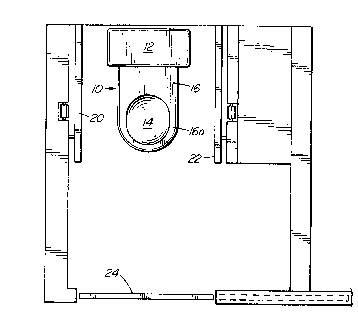Une partie des informations de ce site Web a été fournie par des sources externes. Le gouvernement du Canada n'assume aucune responsabilité concernant la précision, l'actualité ou la fiabilité des informations fournies par les sources externes. Les utilisateurs qui désirent employer cette information devraient consulter directement la source des informations. Le contenu fourni par les sources externes n'est pas assujetti aux exigences sur les langues officielles, la protection des renseignements personnels et l'accessibilité.
L'apparition de différences dans le texte et l'image des Revendications et de l'Abrégé dépend du moment auquel le document est publié. Les textes des Revendications et de l'Abrégé sont affichés :
| (12) Brevet: | (11) CA 2031350 |
|---|---|
| (54) Titre français: | W.-C. ADAPTE AUX BESOINS DES PERSONNES EN FAUTEUIL ROULANT |
| (54) Titre anglais: | TOILET FOR WHEELCHAIR USERS |
| Statut: | Périmé et au-delà du délai pour l’annulation |
| (51) Classification internationale des brevets (CIB): |
|
|---|---|
| (72) Inventeurs : |
|
| (73) Titulaires : |
|
| (71) Demandeurs : |
|
| (74) Agent: | SMART & BIGGAR LP |
| (74) Co-agent: | |
| (45) Délivré: | 1993-03-02 |
| (22) Date de dépôt: | 1990-12-03 |
| (41) Mise à la disponibilité du public: | 1992-06-04 |
| Requête d'examen: | 1992-06-11 |
| Licence disponible: | S.O. |
| Cédé au domaine public: | S.O. |
| (25) Langue des documents déposés: | Anglais |
| Traité de coopération en matière de brevets (PCT): | Non |
|---|
| (30) Données de priorité de la demande: | S.O. |
|---|
ABSTRACT OF THE DISCLOSURE
The toilet disclosed makes it possible for a person
confined to a wheelchair independently to move from the
wheelchair to the toilet, without the assistance of a third
party. The configuration of the toilet bowl, including a unitary
seat makes it possible for a person, using adjacent grab bars, to
move from the wheelchair (adjacent and facing the toilet), to a
position on the toilet facing in the direction opposite from that
normally assumed by a person using the toilet.
Note : Les revendications sont présentées dans la langue officielle dans laquelle elles ont été soumises.
Note : Les descriptions sont présentées dans la langue officielle dans laquelle elles ont été soumises.

2024-08-01 : Dans le cadre de la transition vers les Brevets de nouvelle génération (BNG), la base de données sur les brevets canadiens (BDBC) contient désormais un Historique d'événement plus détaillé, qui reproduit le Journal des événements de notre nouvelle solution interne.
Veuillez noter que les événements débutant par « Inactive : » se réfèrent à des événements qui ne sont plus utilisés dans notre nouvelle solution interne.
Pour une meilleure compréhension de l'état de la demande ou brevet qui figure sur cette page, la rubrique Mise en garde , et les descriptions de Brevet , Historique d'événement , Taxes périodiques et Historique des paiements devraient être consultées.
| Description | Date |
|---|---|
| Inactive : CIB de MCD | 2006-03-11 |
| Inactive : CIB de MCD | 2006-03-11 |
| Le délai pour l'annulation est expiré | 2000-12-04 |
| Lettre envoyée | 1999-12-03 |
| Inactive : TME en retard traitée | 1999-04-08 |
| Lettre envoyée | 1998-12-03 |
| Accordé par délivrance | 1993-03-02 |
| Exigences pour une requête d'examen - jugée conforme | 1992-06-11 |
| Toutes les exigences pour l'examen - jugée conforme | 1992-06-11 |
| Demande publiée (accessible au public) | 1992-06-04 |
Il n'y a pas d'historique d'abandonnement
| Type de taxes | Anniversaire | Échéance | Date payée |
|---|---|---|---|
| TM (brevet, 7e anniv.) - petite | 1997-12-03 | 1997-11-13 | |
| Enregistrement d'un document | 1998-10-08 | ||
| Annulation de la péremption réputée | 1998-12-03 | 1999-04-08 | |
| TM (brevet, 8e anniv.) - petite | 1998-12-03 | 1999-04-08 |
Les titulaires actuels et antérieures au dossier sont affichés en ordre alphabétique.
| Titulaires actuels au dossier |
|---|
| DAYE SHANNON CROSS CANADA TOUR FOUDATION LTD. |
| Titulaires antérieures au dossier |
|---|
| OSCAR DINELLE |